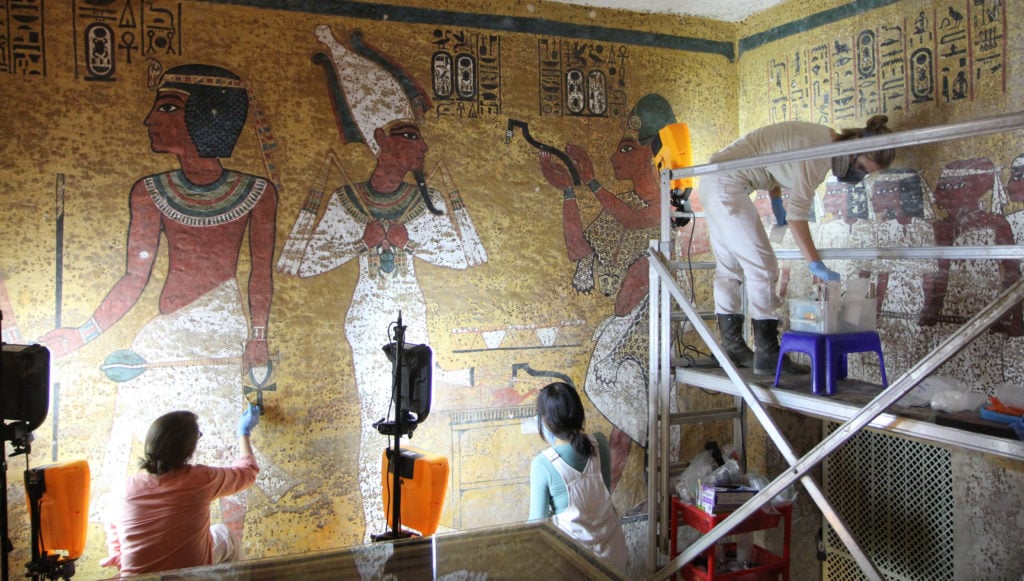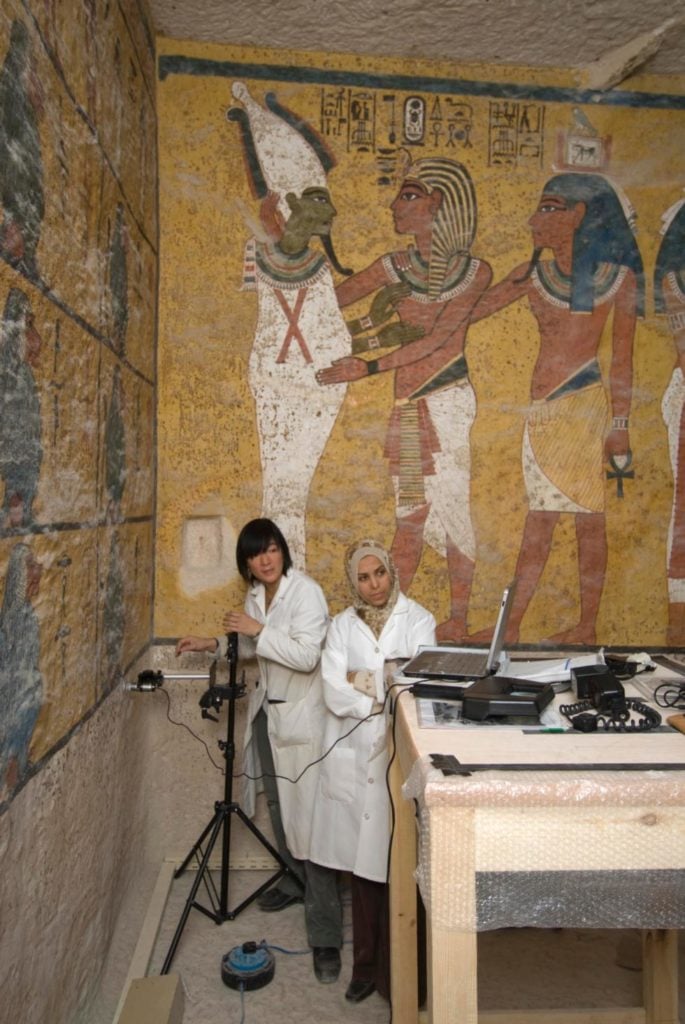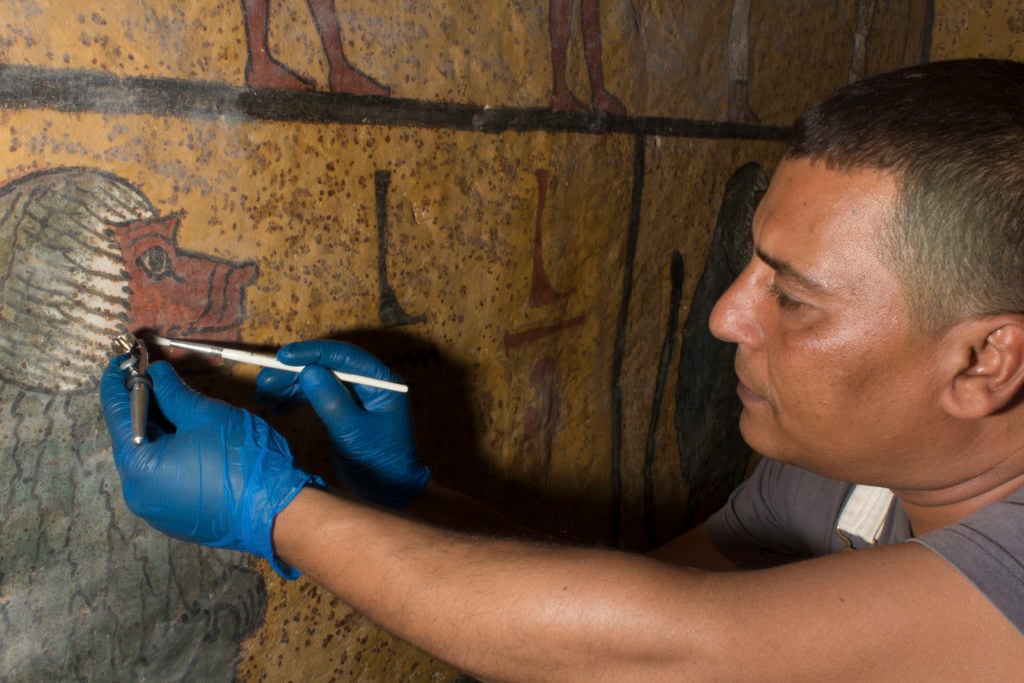Art World
King Tut’s Tomb Just Underwent a 10-Year Restoration. Here’s How Experts Repaired the Ravages of Mass Tourism
The Getty Research Institute partnered with the Egyptian Ministry of Antiquities to conserve the ancient tomb.

The Getty Research Institute partnered with the Egyptian Ministry of Antiquities to conserve the ancient tomb.

Henri Neuendorf

One hundred years since the British archaeologist Howard Carter discovered Tutankhamun’s tomb, the enduring fascination with the boy king has left a mark—literally. The hundreds of thousands of tourists shuffling in and out the small burial chamber has gradually caused damage to much of King Tut’s final resting place.
And before 2009, the tomb, which is one of the most popular tourist attractions in the world, had never undergone any kind of conservation. But now the Egyptian Ministry of Antiquities and the Getty Conservation Institute has concluded the decade-long effort to preserve the tomb for future generations.
“Egypt is a country where there’s been quite heavy visitation levels and sites like the valley of the kings, and certainly the tomb of Tutankhamun, is a focus of mass tourism,” Laurie Wong, a wall paintings expert at the Getty Conservation Institute, told artnet News. “The crux of our project was to figure out how to manage the level of visitation and then also to continue to maintain the tomb in good condition for the future.”
We spoke to the conservators about how they made it happen. Here are four challenges they faced:

Conservators using a portable microscope linked to a tablet to monitor the paintings on the west wall. Photo courtesy of the Getty Conservation Institute.
Visitors generate humidity and carbon dioxide, which has gradually encouraged microbiological growth while the fluctuation of water vapor has put stress on the fragile wall paintings. Meanwhile, visitors have brought in dust that settles on the paintings and obscures their colors. To mitigate these challenges, the team installed an air filtration and ventilation system and carried out a painstaking cleaning of the wall paintings.
The conservation process started almost a decade ago, and researchers faced considerable challenges over the course of the long-running project. “Aside from the technical and scientific problems, one always has challenges because these projects are so multifaceted,” Neville Agnew of the Getty Conservation Institute told artnet News. Aside from long travel distances between the center’s home in Los Angeles and the tomb in Luxor, “the political turmoil over the course of the project frequently prevented us from coming here,” Agnew said.

Wall paintings conservation work being conducted in the burial chamber of the tomb. Photo courtesy of the Getty Conservation Institute.
A team of highly trained experts from the Getty Conservation Institute worked in close collaboration with the Egyptian Ministry of Antiquities to carry out the most thorough study of the tomb’s condition since archaeologist Howard Carter discovered it in 1922. Egyptologists began by conducting background research, while environmental engineers investigated the tomb’s microclimatic conditions and microbiologists studied mysterious brown spots on wall paintings. Then documentation specialists, architects, and designers worked to upgrade the tomb’s infrastructure and conservators carried out condition recording and treated the wall paintings.
While the Getty doesn’t disclose the cost of its conservation projects, Neville Agnew, its director of information and communications, said the price of this project was “considerable.” Luckily, he added, “the Getty has the resources to do that.” No conservation work has been performed on the tomb since its discovery in 1922, so in addition to touching up the signs of wear accumulated over almost a century, the team also took great pains to preserve it for the future.